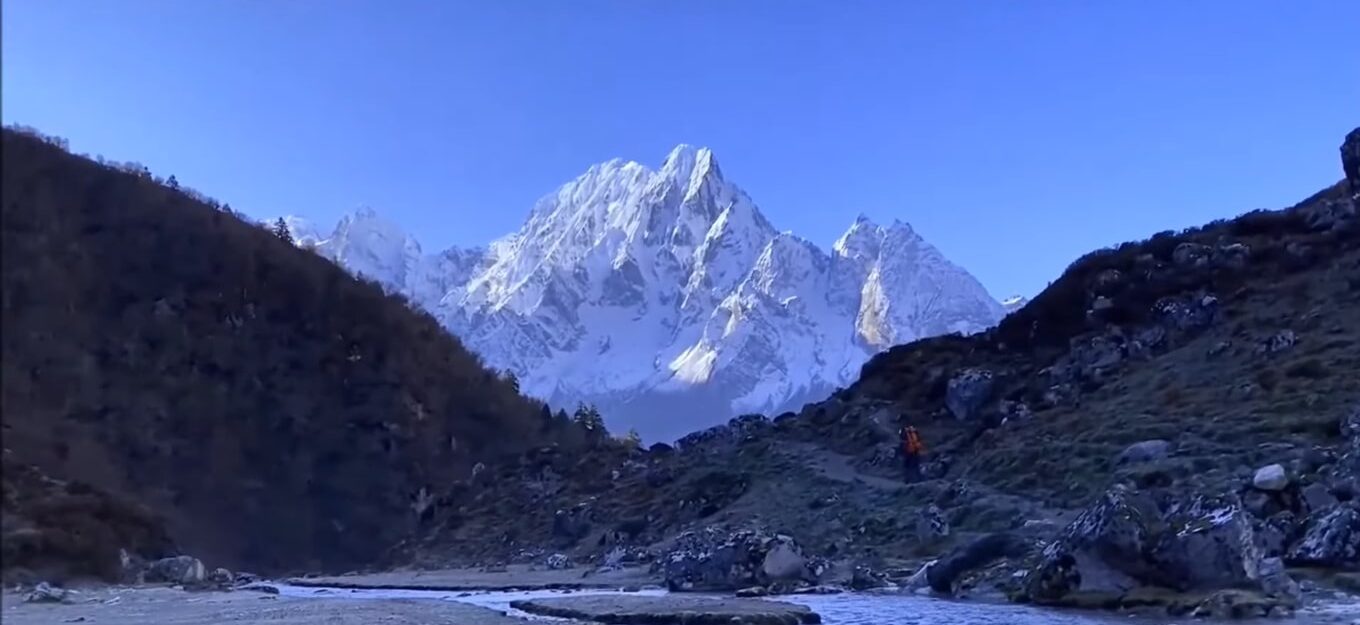
Journey to the Untouched Beauty of Manaslu Trekking Adventure
Nepal is a country that needs no introduction when it comes to trekking. From the world-renowned Everest Base Camp trek to the lesser-known treks, Nepal has something for every type of trekker. If you’re looking for a trek that is less crowded, offers breathtaking mountain views, and takes you through quaint villages and rhododendron forests, then the Manaslu Trekking is for you.
In this blog, we will take a comprehensive look at everything you need to know before embarking on a Manaslu Trekking adventure.
Overview of Manaslu Trekking
Manaslu Trekking is a relatively new trekking route that was opened to foreign trekkers in 1991. Additionally, the trek is located in the Manaslu Conservation Area in western Nepal. The trek takes you through remote villages, and diverse landscapes, and offers stunning mountain views, including the eighth-highest peak in the world, Mount Manaslu.
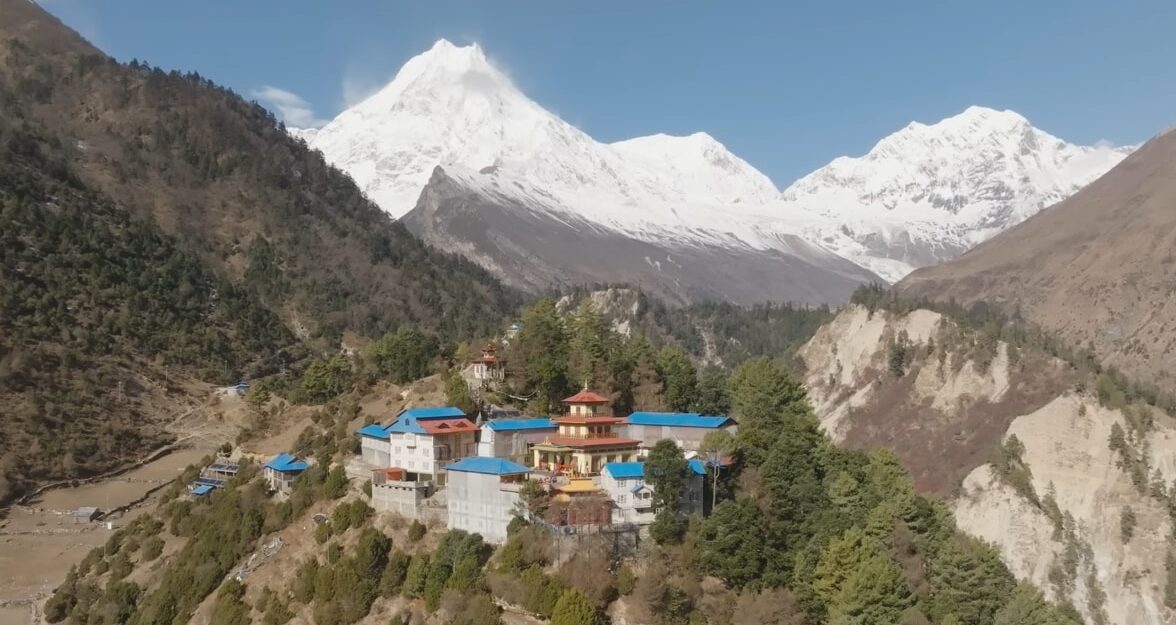
Despite the incredible scenery, the Manaslu Circuit trek is a moderate to strenuous trek that requires a good level of fitness. In fact, the trek takes around 15 to 18 days to complete and covers a distance of around 177 kilometers. Finally, it’s worth noting that the highest point of the trek is the Larkya La Pass, which stands at an elevation of 5,160 meters.
Best time to go on a Manaslu Trekking adventure
The best time to go on a Manaslu Trekking adventure is from September to November. During this time, the weather is clear, and the skies are blue, offering unobstructed views of the mountains. The temperature during the day is mild, making it perfect for trekking, and the nights are cold, so make sure to bring warm clothing and a sleeping bag.
Getting there
The Manaslu Trekking route begins with a drive from Kathmandu to Soti Khola, a small village located in the Gorkha district. The journey takes around 7 to 8 hours and is an adventure in itself. The drive takes you through winding roads, past beautiful villages, and along the Budhi Gandaki River.
Permits required for Manaslu Trekking
Like all treks in Nepal, you need permits to go on a Manaslu Trekking adventure. Specifically, the two permits required for the trek are the Annapurna Conservation Area Permit (ACAP) and the Restricted Area Permit (RAP). In terms of cost, the ACAP costs around USD 30, while the RAP costs around USD 100 per person per week. However, it’s important to note that only a registered trekking agency can issue the RAP.
Trekking routes
There are two main trekking routes for the Manaslu Circuit trek: the clockwise route and the anti-clockwise route. The clockwise route takes you through the Larkya La Pass first and then to the villages of Samdo, Dharamsala, and Bimthang. The anti-clockwise route takes you through the villages of Deng, Namrung, and Sama Gaon before reaching the Larkya La Pass.
Both routes offer stunning mountain views and take you through remote villages, where you can experience the local culture and traditions.
Accommodations on the trek
Unlike some other treks in Nepal, the Manaslu Trekking route has several tea houses and lodges where you can stay. The tea houses offer basic accommodation with a bed, a shared bathroom, and a common dining area. The cost of accommodation varies depending on the location and the season.
However, during the peak season, it’s recommended to book your accommodation in advance to ensure availability.
Food and water
Most of the tea houses along the trekking route offer a variety of local and international dishes. You can find everything from traditional Nepali dishes like dal bhat (rice, lentil soup, and vegetables) to Western dishes like pizza and pasta. It’s recommended to stick to vegetarian dishes during the trek as meat can be difficult to preserve in remote areas.
It’s important to stay hydrated during the trek, and you can purchase bottled water along the way. However, to minimize plastic waste, it’s recommended to bring a water purification system or purification tablets.
Hiring a porter or guide
Hiring a porter or guide is not mandatory for the Manaslu Trekking adventure. However, it’s recommended, especially if it’s your first time trekking in Nepal. A porter can carry your backpack and other gear, making the trek less physically demanding.
A guide can provide valuable information about the trek, the local culture, and traditions. It’s important to hire a porter or guide through a registered trekking agency to ensure that they are trained and paid fairly.
Equipment required for Manaslu Trekking
The Manaslu Trekking route requires basic trekking equipment, including a sturdy pair of trekking shoes, a sleeping bag, a backpack, warm clothing, and rain gear. It’s recommended to bring layers of clothing as the temperature can fluctuate throughout the day. A headlamp, a water bottle, and a water purification system are also essential items.
Mountain views
The Manaslu Trekking adventure offers some of the most stunning mountain views in Nepal. The trek takes you through the Manaslu Conservation Area, which is home to Mount Manaslu, the eighth-highest peak in the world. You can also see other peaks like Annapurna II, Ganesh Himal, and Shringi Himal.
The trek takes you through diverse landscapes, including rhododendron forests, rocky terrain, and high mountain passes. The mountain views are particularly stunning during the clear days of September to November.
Rhododendron forests
One of the highlights of the Manaslu Trekking adventure is the trek through the rhododendron forests. The forests are in full bloom during the spring months of March to May, offering a riot of colors.
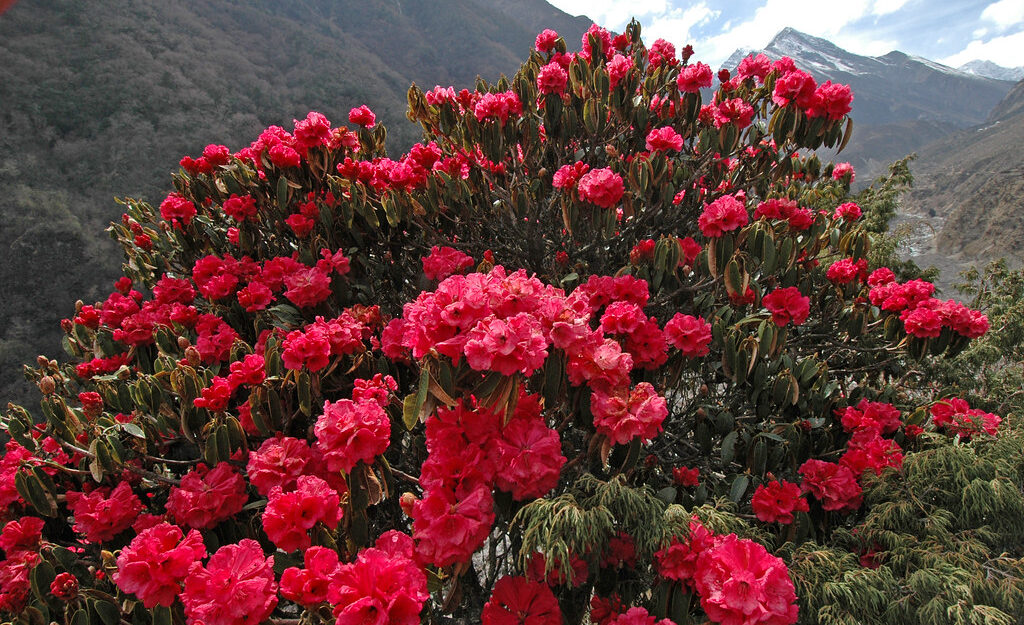
Similarly, the forests are also home to a variety of wildlife, including the endangered snow leopard and the Himalayan tahr.
Moreover, the forests are also an important source of firewood and timber for the local communities, and it’s important to respect the forests and not litter.
Highest point of the trek
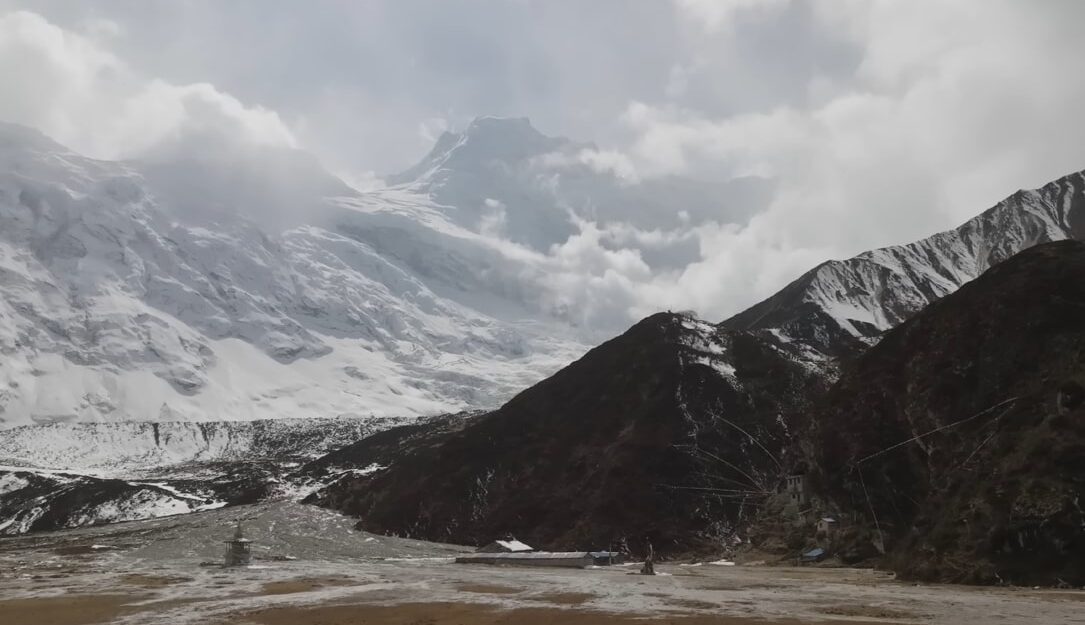
The highest point of the Manaslu Trekking adventure is the Larkya La Pass. It stands at an elevation of 5,160 meters. The pass offers stunning mountain views and is a challenging climb. It’s recommended to acclimatize properly before attempting the pass and to bring warm clothing as it can be extremely cold and windy at the pass.
Annapurna Circuit
The Manaslu Trekking adventure can be combined with the Annapurna Circuit trek. It is one of the most popular treks in Nepal. The Annapurna Circuit takes you through the Annapurna Conservation Area, which is home to several peaks like Annapurna I, II, III, and IV. The circuit trek takes around 20 to 25 days to complete and covers a distance of around 230 kilometers.
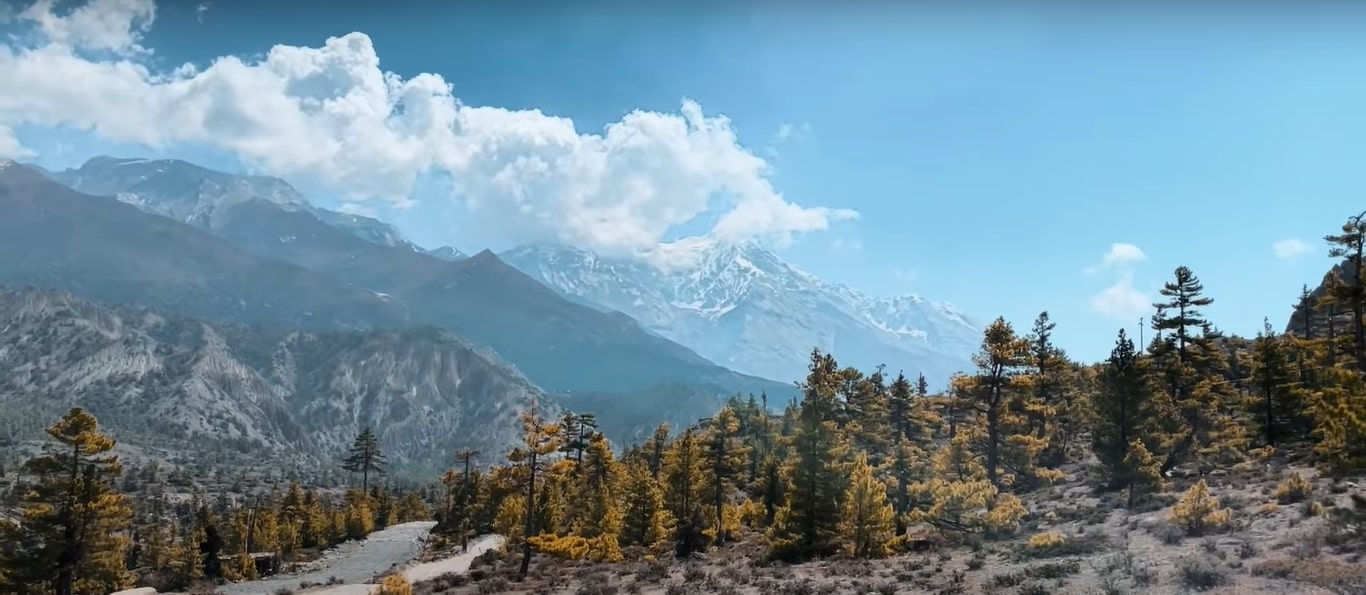
Combining the Manaslu Trekking adventure with the Annapurna Circuit trek offers a diverse trekking experience. It takes you through remote villages, high mountain passes, and stunning mountain views.
What will you come across in the Manaslu trek?
Here are the highlights of the Manaslu Trek in bullet points:
- Stunning mountain views, including Mount Manaslu, Annapurna II, Ganesh Himal, and Shringi Himal
- Diverse landscapes, including rocky terrain, steep ascents, and high mountain passes
- Remote villages inhabited by ethnic groups like the Gurung, Tamang, and Sherpa
- Immersion in the rich culture and traditions of the local communities
- Opportunity to experience unique festivals and rituals
- Natural attractions like valleys, gorges, and waterfalls
- Terrain that is difficult and demands stamina and physical fitness
- Trekking through the Manaslu Conservation Area, which is home to rare flora and fauna
- Crossing the Budhi Gandaki River on suspension bridges
- Opportunity to combine the Manaslu Trek with the Annapurna Circuit Trek for a more diverse experience
FAQs
Do I need a special permit to trek in the Manaslu region?
Yes, you need a restricted area permit to trek in the Manaslu region. This permit is issued by the government of Nepal and is required to protect the fragile ecosystem of the region. You also need an Annapurna Conservation Area Permit (ACAP) to trek through the Manaslu Conservation Area.
How challenging is the Manaslu Trek?
The Manaslu Trek is a challenging trek that requires physical fitness and endurance. The trek takes you through steep ascents, rocky terrain, and high mountain passes. You should be ready to trek for six to eight hours a day and be comfortable sleeping in basic tea houses along the way.
What time of year is ideal for trekking in the Manaslu area?
The months of September through November are ideal for trekking in the Manaslu area. During this time, the weather is mild and dry, offering clear skies and stunning mountain views. The temperatures are also comfortable for trekking.
Do I need to hire a porter to carry my backpack?
It is not necessary to hire a porter to carry your backpack. However, it is recommended if you are not used to carrying heavy loads for an extended period. Hiring a porter will allow you to enjoy the trek without the added weight of your backpack. By employing a porter, you may contribute to the neighborhood as well.
What kind of equipment do I need to bring for the Manaslu Trek?
You will need basic trekking equipment, including a sleeping bag, warm clothes, sturdy trekking shoes, a backpack, a water bottle, and a trekking pole. You can rent or buy equipment in Kathmandu or in the villages along the trekking route.
Conclusion
The Manaslu Trekking adventure offers a unique trekking experience in Nepal. It takes you through remote villages, diverse landscapes, and stunning mountain views. The trek requires a good level of fitness and a basic level of trekking equipment.
Hiring a porter or guide is recommended. It is important to respect the local culture and traditions during the trek. The Manaslu region is a restricted area, and a special permit is required to enter the region.
The trek takes you through the Manaslu Conservation Area. It is home to Mount Manaslu, the eighth-highest peak in the world. You can also see other peaks like Annapurna II, Ganesh Himal, and Shringi Himal. During the way, you’ll pass through rhododendron woods, rugged terrain, and high mountain passes, among other varied vistas.
Inquiry
If you want to know anything regarding the trip or any other issue, please feel free to ask us
